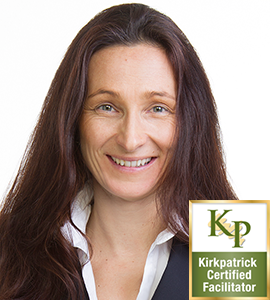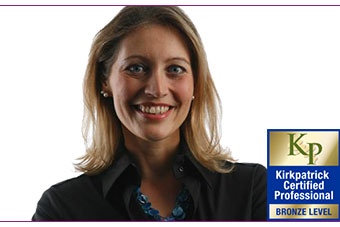
Mondi’s Global Leadership Training Program (Customer story)
Mondi’s new global leadership training program will be launched in the fall of 2017. The program will focus on intercultural leadership and the preparation of leaders for international challenges. We talked about the program with Birgit Höttl, head of The Mondi Academy and Helena Gutierrez, MDI Training & Development consultant. They explained the benefits for the company, the complexity of the topic and gave some tips for the successful transfer of intercultural content.
What were the main reasons for the development of the Global Leadership Program?
Birgit Höttl: As a globally operating company we often send out our managers to other countries, for example as part of the integration of new plants. It is important that managers who come to a new country have a sense of what intercultural leadership means and what risks are involved. With our new training we want to create awareness for cultural differences and show the participants what they have to keep in mind when they come to a new culture, one which is maybe completely different than the own one – especially when it is about leadership. An integration phase is already a stressful time. If a leader doesn’t have a feel for the new culture, particularly during such a stressful time, many things can go wrong – such as loss of time, friction loss and in the end can lead to something like financial loss.
So does it mean that the program is a preventive measure?
Birgit Höttl: Yes, prevention is one focus of the program. We want to help our managers to better understand others cultures and their ways of working. We want to support the global mind-set of our managers in general. Mondi is globally operating and we all work in a world that is growing together. This is why we want leaders with a broader view and who have intercultural sensitivity. In relation to their leadership mind-set they should have a holistic approach to leadership and think globally. “Think global, act local” is a good example of explaining it.
Intercultural competence is an important skill at Mondi and at the same time the core of the new program. What makes a manager at Mondi culturally competent?
I think that it is important to get some information about the foreign country in the first place and to compare your own values with the values from the foreign culture. This makes someone cultural competent. Another thing is to recognize and reflect your own learning fields. This gives you the chance to work on them and enables you to meet your own expectations as well as the expectations of the company and your future employees. Self-reflection is therefore something that is important in a culturally competent leadership.
Does this mean that cultural competence is more a mind-set than a toolbox?
Not only – I think that it definitely starts with a mind-set because you have to be open for the new culture and start to compare their values with your own. It is important to show openness for new cultures, perhaps as well a healthy curiosity for how things work in the foreign culture and what you can learn from the people there. An open mind-set is not enough. You need a toolbox you can go back to as well, tools that help you to apply and implement things. The right mixture of mind-set and toolbox is therefore important for cultural competence.
Intercultural competence can be a sensitive topic in terms of stereotypes. How do you avoid clichés?
I think that in training like this – you may not necessarily use stereotypes – but you must emphasize certain things. However it should not remain on this level – it is important to provide the participants with practical examples such as exercises to get them out of their comfort zone as well as personal experience reports from participants. This creates a truly practical work environment. In the pilot training, employees from many different cultures were involved as well as managers who already gained international experiences as expats. This was a very valuable and important contribution that made the training work and implementable without sticking to stereotypes.
Keyword comfort zone: the new program should get the participants out of their comfort zone to develop new skills. How does this work exactly?
You need practical exercises to get out of your comfort zone. I can especially remember the exercises which had insecurity as their basic motive. The good thing about such exercises is that you get out of your comfort zone relatively fast because you do not know what is going on and how to react. No basic rules were made in the beginning – the participants were thrown into the deep end. This reflects very well what can happen when you are not informed about the habits and values of the new culture. Exercises like this demonstrate how misleading and dangerous it can be to go unprepared into such situations.

Exercises which have insecurity as their basic motive get you out of your comfort zone very quick – which is a very good learning effect
How did the participants like the pilot training?
They liked it very much! They particularly enjoyed the exchange of information with other participants who have already gained international experience. But of course – and that is the reason why we have a pilot training – there are some things we have to refine a little bit. Perhaps we must even add more of those “uncomfortable” exercises to the training – our employees like hands-on exercises such as the ones we had in our training. All in all the feedback was very positive. One sales director liked it even so much that he is now offering the training to his team – apart from the training we offer.
What would have been different without the pilot group?
This is hard to say because we always have a training with a pilot group before the complete roll-out. The participants of the pilot training are people with a lot of experience. In this way we are able to get really good, critical and constructive feedback.
Is this a measure you would recommend?
Yes, definitely. The training can be designed by a professional training provider and can be in line with the shareholder’s expectations: the practical implementation will always differ from the actual plan. This is why I would always make a test run first – it simply enables quality assurance.
What has to be done until the launch in September?
We will advertise and change and adapt certain things – based on the feedback from the pilot group. Afterwards we can start with the international roll-out.
In the end a look into the future: what must happen that Mondi considers the program as successful?
Well, it is successful when the participants recommend this program to their colleagues afterwards – positive word-of-mouth is always a sign of success.
We asked our consultant
Helena Gutierrez is MDI Training and Development Consultant for Mondi’s program. We asked her some questions as well.
From a training provider’s point of view: What was the most challenging task in designing this new Global Leadership Training Program?
The most challenging thing was to come up with the right learning transfer strategy, mostly because the employees of Mondi are very well equipped with a lot of soft skills and a lot of training in their pockets. We wanted something that would not only take them out of their comfort zone but also offer them a deeper look into culture and to show them what it really takes to be an outstanding leader in the global environment. It was not an easy task but because we are not dealing with ‘rookies’, success was achieved.
How did it work out? Would you say that there is a key to really developing and strengthening such skill as “intercultural competence”?
I think it worked out really well plus the feedback was clearly fantastic. The key: Mondi’s got it! People at Mondi are willing to get out of their comfort zone, they are open for challenges and growth. That is the success factor: Mondi goes the extra mile. They act with global understanding and they want to learn from best practices. That’s one key success factor why this training is so successful.
What serves you next?
Training evaluation: More courage for more results
Nobody likes to give insights into fields, where problems exist. And due to a mutual comfort zone everybody tends to avoid questions about it. We’re talking about trainers and organisations designing development programs together. For real trainings results as well as positive and direct contribution to business-goals it takes courage – on both sides.
Key competitive factor: International leadership development
The ongoing internationalisation of the economy – first and foremost conditioned by technological progress – entails the necessity of international leadership development. In addition to individual country cultures international and global company cultures gain a more and more important role.
Ingredients for your next leadership program design
Targets and expectations are clear, you gained the commitment of all relevant stakeholders and up to board level everyone is aware of the importance of your planned international leadership program. Now it’s time for the actual design of the program. We identified the four most common pitfalls on the way to hazzle-free design of an effective leadership program and added helpful “ingredients of success” right om the practice to avoid them.



















